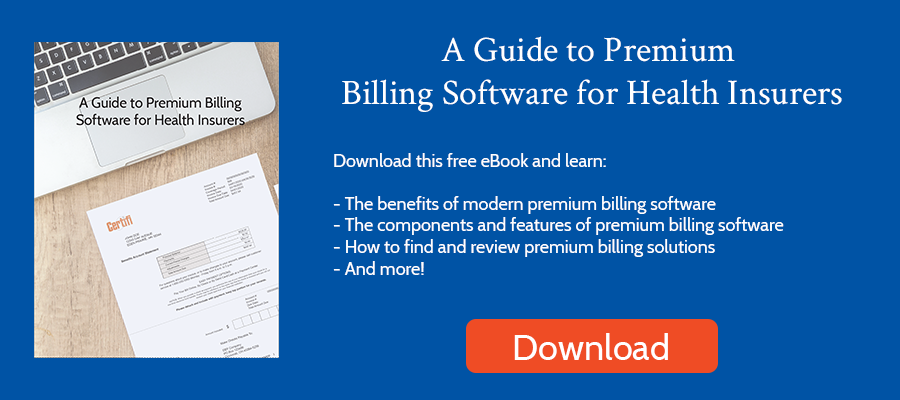Many health insurers still rely on legacy billing systems or dated core admin solutions with less robust billing modules. As a result, they lack flexibility and result in a very manual, very time-consuming, very expensive premium billing process.
Below are 3 health insurance premium billing platform attributes that can help turn that manual, inflexible, expensive process into a flexible, automated, and less expensive one.
Configurable
One of the core issues with legacy health insurance premium billing platforms is their inflexibility. Most payers designed and built systems based on the state of billing then. As a result, they couldn’t account for the need to be able to make unforeseen changes. For example, the COVID-19 pandemic led many health insurers to delay or not enforce late payment fees. Some health insurers decided not to terminate delinquent members during the pandemic. Modifying those rules in many instances involved wading into code. That process can take time and requires access to limited resources.
A configurable billing platform improves your ability to react to sudden events. Whether you need to turn off late payment fees, define tolerance thresholds, set billing frequencies, set billing run dates, setup billing pro-ration rules for mid-month additions and terminations, or create rules-based delinquency notifications, you need a system that simplifies configuration.
Configuration can simplify making billing changes on the fly. As a result, it can improve time-to-market for new products. Sometimes you need to configure billing rules. Rather than being forced to request development resources to release a product with unique billing rules, you can simply configure billing rules in the health insurance premium billing platform. A configurable system makes it easier to introduce innovative new products.
Designed to Limit Manual Reconciliation
You don’t need to deploy an entire team of billing analysts to reconcile premium payments. You just need a system designed to limit manual reconciliation. What does that system look like?
- An accounting-style design that couples debits and credits at the person level – The system should generate person-level transactions for each policy for every month of coverage. These transactions identify the source(s) of payment, like an employer premium, an individual premium or a low-income subsidy, an APTC subsidy, or any other payment type. The receivables side of the transaction should identify all recipients of funds collected, including premiums payable to a carrier, fixed or variable administrative fees for a program administrator, or fixed or variable broker or agent commissions. As a result, when you generate the invoice, debits and credits are linked.
- Automated Adjustments – When retroactive transactions occur, the system should automatically create offsetting adjustments, eliminating the need for manual intervention.
- Rules-based Payment Application – Partial payments should be dynamically applied based on defined rules, limiting more manual intervention. Any related receivables can be applied based on actual payments made. You can automatically apply future payments to the oldest outstanding transactions, again without manual intervention.
Forced balance and rules-based designs streamline the billing and collection process while limiting manual reconciliation.
Scalability
One of the unique characteristics of a health insurance premium billing platform is that the billing process occurs over a period of a few days. Generating billing transactions and invoices needs to occur in a relatively short amount of time within a given period every month. As a result, you need a premium billing solution that can scale up to meet your monthly billing needs. And then scale down so you’re not wasting technology resources.
One way to do that is by leveraging cloud technology like Amazon Web Services. Unlike software that runs within on-premise infrastructure, solutions that run in the cloud can leverage dynamic computing resources to scale. For example, a solution running on Amazon Web Services can take advantage of lambdas, auto-scale groups, and other components of AWS architecture to deliver web applications that scale to meet application needs.
Two benefits arise from using cloud auto-scaling technology to meet demand:
- Faster processing — Because the computing technology scales to meet demand, you’ll process transactions faster — even if there are millions of monthly transactions — than you’d likely be able to process using on-premise technology.
- Lower cost — Instead of building infrastructure to meet peak demand while generating invoices, you can scale technology resources up and down dependent on needs. As a result, you’ll save a significant amount of money.
Certifi’s health insurance premium billing and payment solutions help healthcare payers improve member satisfaction while reducing administrative costs.



